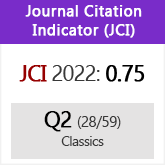Arqueología y diferenciación del indoeuropeo
DOI:
https://doi.org/10.3989/emerita.1979.v47.i2.852Abstract
Some ideas on the relations among the Indo-European languages proposed in previous works by the author and certain colleagues seem to agree with the data recently discovered by archeologists. A septentrional invader horde probably entered Europe via the north of the Carpathian Mountains: the Balts and the Slavs were its rear. The gap formed behind them was occupied by people speaking Uralo-Altaic languages, because their movement to the West was paralleled by a movement of the Tocharians to the East. To the south of the first invader horde another moved by the Black Sea and afterwards via south of the Carpatian Mountains: its van was formed by the ancestors of the Indo-Iranians, Thracians and Greeks whose languages were interrelated and developed some isoglosses in common with the rear part of the septentrional horde, that is, the Balts and the Slavs. Later, as the Greeks moved south, contact was established between the Thracians and the Indo-Iranians, on one hand, and the Balts and the Slavs, on the other. A new series of isoglosses developed. All these movements took place at a time when Indo-European had developed multiple stem-flexion. Early Indo-European has been preserved by the Anatolian languages, which reached Asia Minor via the Caucasian Mountains and were isolated from other Indo-European developments at a very early date.
Downloads
Download data is not yet available.
Downloads
Published
1979-12-30
How to Cite
Adrados, F. R. (1979). Arqueología y diferenciación del indoeuropeo. Emerita, 47(2), 261–282. https://doi.org/10.3989/emerita.1979.v47.i2.852
Issue
Section
Articles
License
Copyright (c) 1979 Consejo Superior de Investigaciones Científicas (CSIC)

This work is licensed under a Creative Commons Attribution 4.0 International License.
© CSIC. Manuscripts published in both the printed and online versions of this Journal are the property of Consejo Superior de Investigaciones Científicas, and quoting this source is a requirement for any partial or full reproduction.All contents of this electronic edition, except where otherwise noted, are distributed under a “Creative Commons Attribution 4.0 International” (CC BY 4.0) License. You may read here the basic information and the legal text of the license. The indication of the CC BY 4.0 License must be expressly stated in this way when necessary.
Self-archiving in repositories, personal webpages or similar, of any version other than the published by the Editor, is not allowed.














